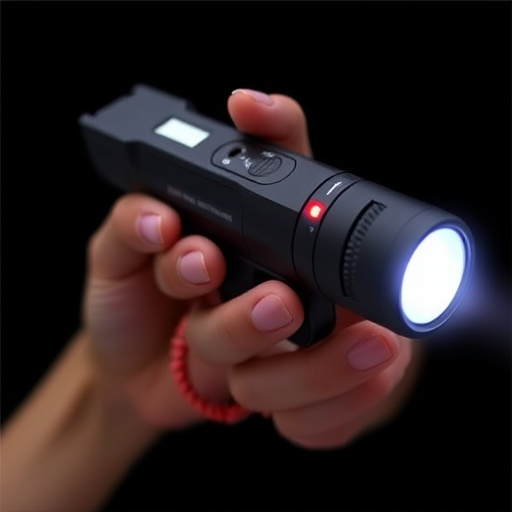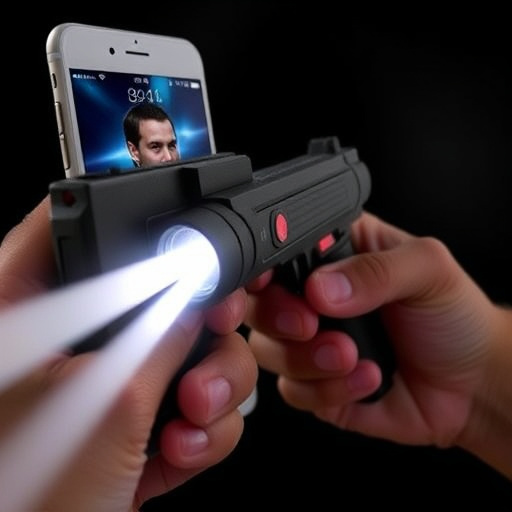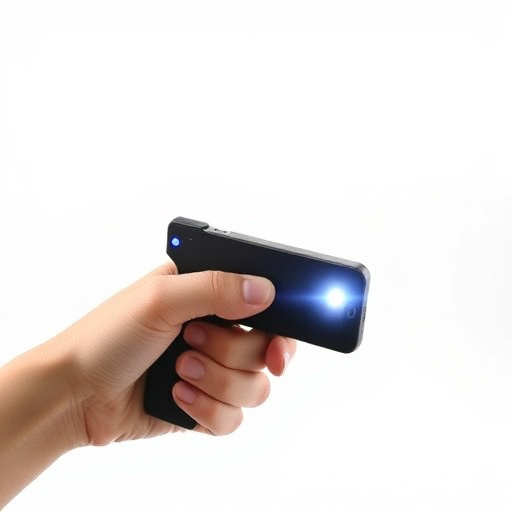The legality of smart phone stun guns varies significantly across US states, requiring thorough research on local regulations. While some permit possession for self-defense, strict restrictions or bans exist in others regarding power output, size, location, and age limits. As technology advances, GPS tracking, automatic alerts, and integrated security apps could influence legislation and increase smart phone stun gun acceptance while enhancing public safety.
“Unraveling the legal landscape of stun guns, this comprehensive guide offers an insightful journey through state-by-state restrictions, especially focusing on the unique case of smart phone stun guns. From understanding the broad overview of stun gun laws to exploring the finer details of carrying these devices legally, we delve into crucial considerations. Additionally, we examine emerging trends and predict potential shifts in legislation, ensuring readers stay informed about their rights and responsibilities regarding stun guns, particularly the innovative variant: smart phone stun guns.”
- Understanding Stun Gun Laws: An Overview
- State-Specific Restrictions on Smart Phone Stun Guns
- Legal Considerations for Carrying a Stun Gun
- Future Trends and Potential Changes in Stun Gun Legislation
Understanding Stun Gun Laws: An Overview

Stun guns, also known as electroshock weapons, are designed to temporarily incapacitate a person through electric shock. The legal status of stun guns varies significantly across the United States, with each state establishing its own rules and regulations. Understanding these laws is crucial for anyone considering carrying a stun gun for self-defense.
Many states allow the possession of stun guns without a permit, making them accessible to responsible citizens. However, there are often restrictions on the power output, size, and capacity of the device. Some states require registration or licensing, while others have specific prohibitions in places like schools, courts, or certain types of workplaces. Additionally, using a stun gun for self-defense may have legal implications, and it’s essential to know the local laws regarding when and how such devices can be employed. With the rise in popularity of smart phone stun guns—small, discreet devices that can fit easily in pockets or purses—navigating these regulations has become more complex. It’s vital for individuals considering arming themselves with a stun gun to research and understand the specific laws in their state.
State-Specific Restrictions on Smart Phone Stun Guns

In the United States, the legal landscape surrounding smart phone stun guns varies significantly from state to state. While some states allow their possession for self-defense purposes, others have stringent restrictions or outright ban them. It’s crucial for individuals considering purchasing a smart phone stun gun to understand the specific laws in their state.
Many states require permits or registrations for stun guns, with some even differentiating between regular stun guns and smart phone models. Some jurisdictions impose age restrictions, while others have provisions for certain types of self-defense use. Additionally, certain states prohibit carrying stun guns in specific places like schools, government buildings, or public transport. The diversity in regulations underscores the need for thorough research to ensure compliance with local laws when owning a smart phone stun gun.
Legal Considerations for Carrying a Stun Gun

When considering carrying a stun gun for personal safety, understanding your state’s laws is paramount. Each U.S. state has its own set of regulations governing the possession and use of stun devices, including smart phone stun guns. These legal considerations vary widely from one state to another, affecting where and how you can legally carry such a device.
Some states allow open carry of stun guns without a permit, while others mandate a concealed carry permit. Still, others have specific restrictions on the voltage or power output allowed in stun devices, with some even prohibiting stun guns altogether. It’s crucial to research and comply with your state’s laws not only for legal compliance but also for personal safety.
Future Trends and Potential Changes in Stun Gun Legislation

As technology advances, so do societal perceptions and needs regarding personal safety devices like stun guns. With the increasing popularity of smart phone applications and compact, easily concealable designs, there’s a growing trend towards more innovative and accessible self-defense tools. This shift could influence future legislation, potentially leading to broader acceptance and easier accessibility for responsible citizens.
The integration of smart phone technology into stun guns offers both enhanced functionality and convenience. For instance, these devices might include GPS tracking features, automatic alert systems that notify emergency contacts, or even integrated security apps. Such advancements could prompt state legislatures to reevaluate their current restrictions, considering the potential benefits for public safety and individual empowerment in self-defense.
The legal landscape surrounding stun guns, particularly smart phone stun guns, varies greatly from state to state. Understanding these restrictions is crucial for those considering carrying a stun gun for personal safety. As technology advances and public perception evolves, so too will legislation. Future trends suggest potential changes that could make stun guns more accessible, but until then, knowing your state’s specific laws is paramount. By staying informed about current regulations and keeping an eye on legal developments, you can ensure compliance while protecting yourself and your loved ones.
